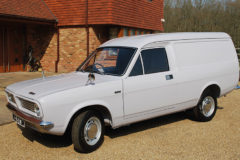Classic and desirable Ford 7810 tractor profiled
Posted by Chris Graham on 29th July 2022
Chris Graham chats with tractor enthusiast Tim Pearman about the Ford 7810 model, which he believes is the best tractor that Ford ever made.
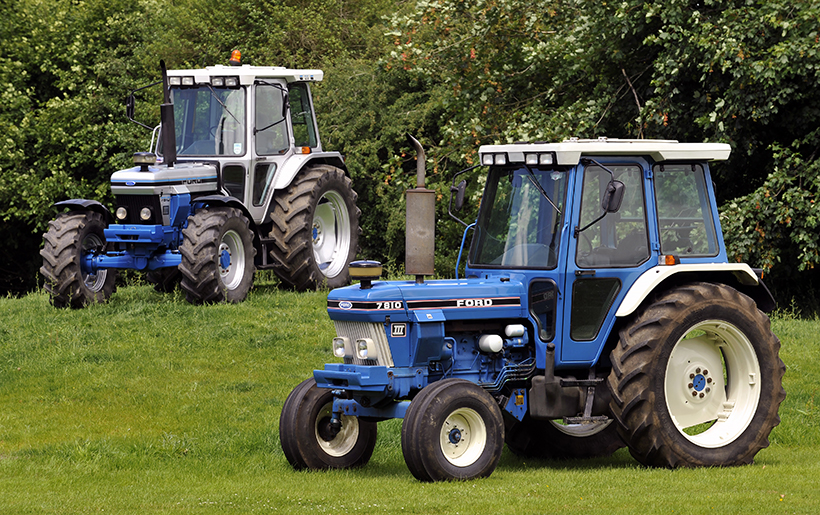
The Ford 7810: Tim Pearman’s pair of 7810s; a model that he believes was the best that Ford ever built.
The restored Ford 7810 Silver Jubilee that sold for £50,000 (+ VAT) at the Rodney Cowle sale recently (see sale report on p51), emphasised further the continuing growth in both the popularity and value of this model. It’s been clear for a while that the 7810 is among the most desirable of classic Fords, and this latest sale price will surely heighten the appetites of collectors clamouring to add one to their collections.
But, there’s so much more to the Ford 7810 than its appreciating asset status. It’s a very highly thought of tractor in its own right, and was an almost instant sales success for Ford when it launched in 1988. The combination of a naturally-aspirated, six-cylinder Ford engine developing 103hp, shoe-horned into the 7610’s chassis frame, proved irresistible to customers who bought the model in their droves. In fact, the model – which produced the same power as the 7910 above it but was appreciably lighter – remained a best seller for Ford right through until it was superseded in 1991.
Staying power
Its reputation has lived on since then and, if anything, grown stronger as an ever-increasing number of enthusiasts have come to appreciate the 7810’s many virtues. Tim Pearman is just such a convert, although he’s been adding Q-cabbed Ford tractors to his extensive collection for a good many years. But he’s happy to admit that the 7810 remains among his favourites, and he owns two of them.
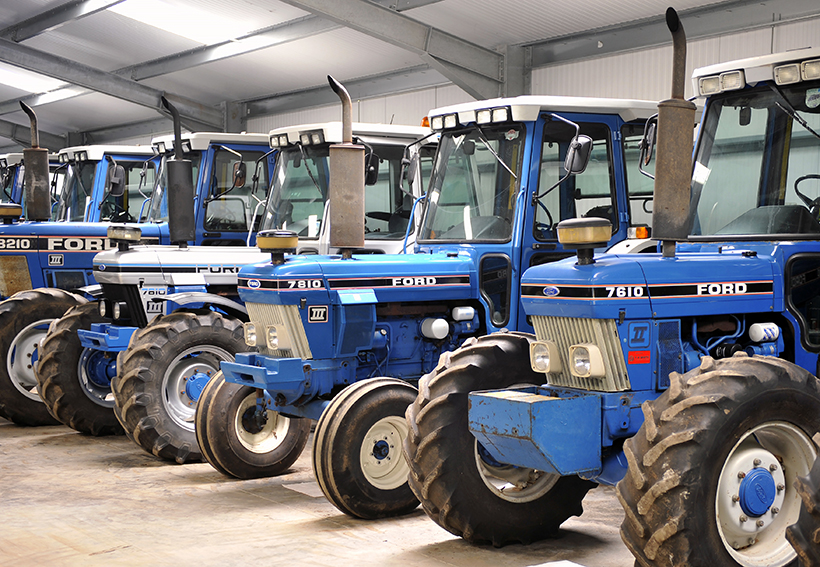
The 7810s sit within Tim’s extensive collection of Super Q-cabbed Ford tractors. These machines were all built before electronics started playing such an integral part in tractor design.
“I like the look of the 7810; to my eye it looks like a proper tractor,” he told me over coffee at his Worcestershire home. “It has a great stance and the Super Q cab is superb. It being a bit lower than the ‘bubble’ cab helps with the overall appearance, I think, and the level of air-conditioned refinement inside is one of the tractor’s strong points. On the move, the synchro gears are easy to use and the Dual Power set-up is a genuinely useful system to have. There’s very little not to like!”
Tim went on to explain that the 7810 superseded the 7610, but was a much more desirable tractor. “The 7810’s six-cylinder engine was a vast improvement over the 7610’s turbocharged four, in my opinion. The spread of the torque from the bigger engine gave the 7810 a real advantage over the higher-revving four-cylinder engine, and made it much more pleasurable to use. Not having to endure a screaming engine for hour after hour was a real plus point. Another advantage the new model had was that it was slightly longer, which gave it better stability and rear wheel grip.
“There’s a school of thought that suggests there’s no substitute for cubic capacity when it comes to engine power, and I agree. The in-the-field advantages offered by the six-cylinder engine compared to a turbocharged four seem to back that up. While turbochargers provide a great way of boosting an engine’s power output, they also add complexity, raise mechanical stress levels and increase maintenance requirements.”
Buying prospects
“Most people these days seem to opt to sell their 7810s through mainstream sales and auctions because the perception is that you’ll get the best price that way. So finding examples being sold at small-scale farm sales, or privately advertised in magazine classified sections, is becoming increasingly rare nowadays, more’s the pity!
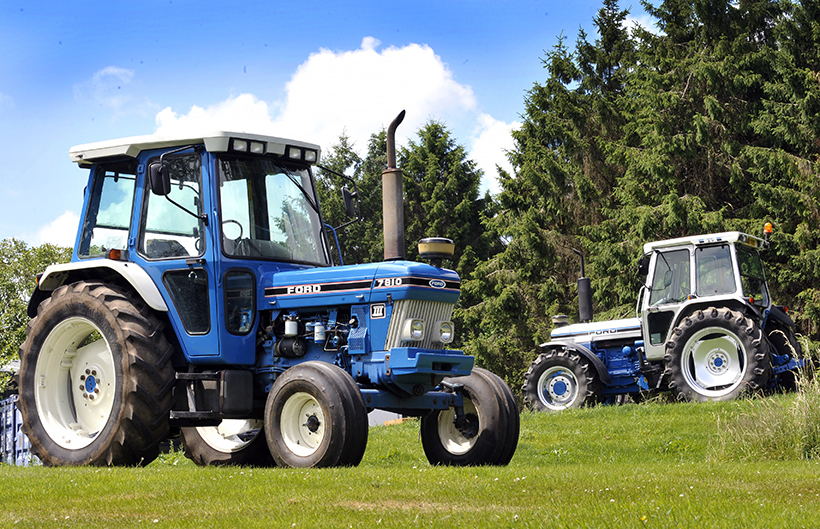
Values of the Silver Jubilee 7810 hit new heights recently, and seem sure to positively influence the sale potential of the standard, blue models.
“I was lucky to find my Silver Jubilee model at a farm sale in Cumbria. The farmer had used it as his working tractor for many years, and it was only being sold due to his retirement. I made him a cash offer before the sale but he was having none of it. In the end, I paid just £1,000 more for it at the sale than I’d offered beforehand. But, as the seller had to pay the auctioneer’s commission, I reckon he was actually no better off! He’d obviously hoped that the auction excitement would carry the price a lot higher but, fortunately for me, that didn’t happen.
“It’s a very genuine machine and certainly matched up to the sale description, so I was lucky. It’s not required any serious work since, although I did opt to have it resprayed simply for cosmetic reasons. It was thoroughly serviced soon after I got it and, since then, it’s been as good as gold.”
Tim is a great believer in first impressions when buying. “I can usually assess the condition of a machine pretty accurately the moment I clap eyes on it. It doesn’t take an expert to recognise whether a tractor is complete and straight, or whether it’s covered in dents and has bits that are obviously broken or missing.
“Tractors that have been properly looked after will normally pass your initial, visual check. All the bits will be where they should be, the lights will be in place and the PTO guard won’t be a puckered mess. On the 7810, little details like the presence of both rear reflectors on the hydraulic arms, the linch pins, the stabiliser bar clips and the straightness of the cab mirror support arms are all important. If these details are right, then you can be reasonably confident that the tractor has been well maintained.
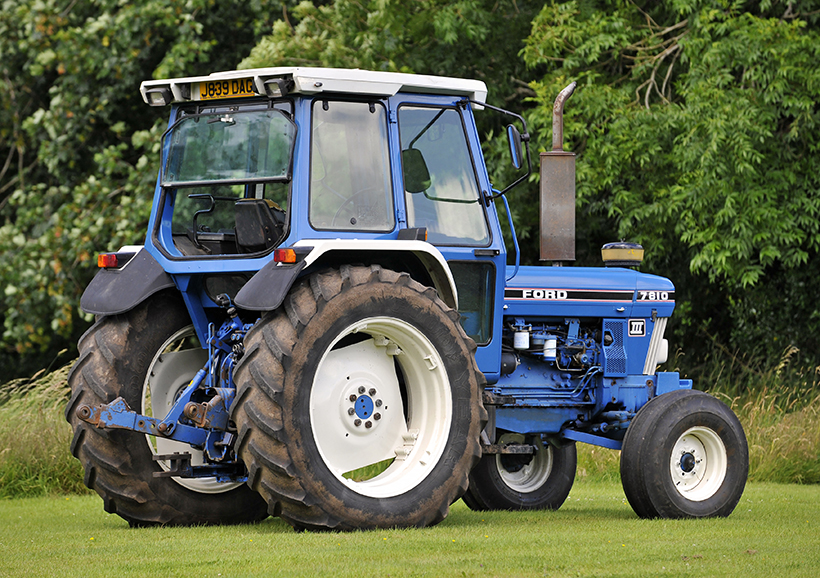
The 7810 was built at a time when tractors were still being over-engineered. As a result, the engine, gearbox, rear axle and hydraulics all last extremely well. Rusting in the Super Q cab is probably the only thing to blot this tractor’s otherwise impressive reputation.
“However, aspects to set the alarm bells ringing for me would include ripped or missing interior cab cladding, obvious oil leaks from the engine and gearbox, problems with the paintwork and, perhaps most importantly of all, the condition of the cab. Most Super Q cabs suffer with rusting along the bottom edges of the windscreen and door windows. Water gets in and sits behind the rubbers, causing corrosion. In many respects the old ‘bubble’ cab was better; perhaps it was made from better quality or thicker steel, or simply benefited from more paint.
“Putting cab rusting right can be an expensive business. If the corrosion is fairly minor then it can simply be rubbed down, primed and re-painted. But if it’s not been caught in time and holes have developed, then carefully-shaped repair sections will have to be let in, which is a much more skilled operation.
“Everything, as always, depends on what your plans are for the tractor you’re buying, and how much money you’re prepared to spend on any renovation work that may be needed. You also have to be wary about how people describe tractors they’re selling. I once went all the way to N Wales to look at a 7810, after the owner had assured me on the ‘phone that there was no rust. When I eventually got there and started my inspection, I could see daylight through the holes in the cab!”
Keep it simple!
For many, the relative simplicity of the 7810 is one of its greatest appeals, and that’s the case with Tim. “This tractor was built before the ‘electronics revolution’, so is both simple and straightforward. Granted, it features a digital dashboard, and this can throw-up a spurious reading now and then but, by and large, that’s as far as the tech goes. The rest of the electrical side of things is essentially reliable. I’d only be wary of a couple of important electronic switches, both of which are situated under the tractor. The first controls the Dual-Power system and it can suffer with corrosion and become faulty as a result. The same applies to the four-wheel-drive switch, on models equipped with it.
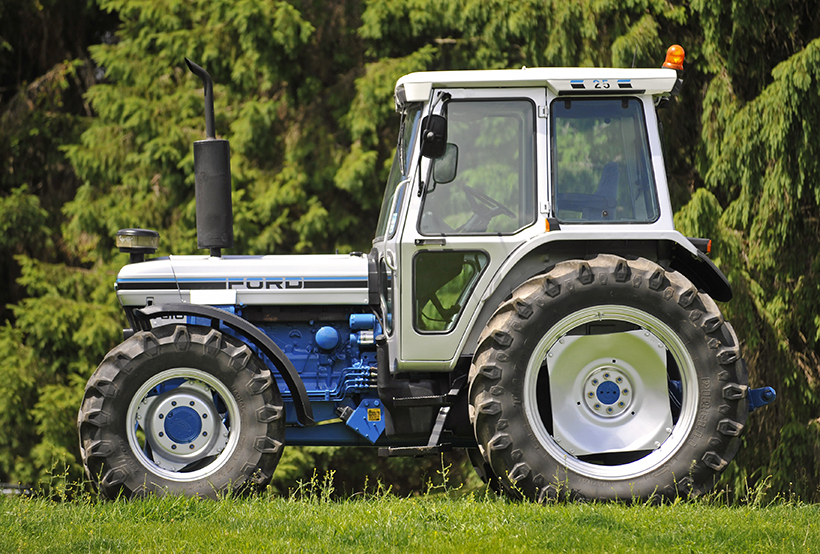
The limited edition 7810 Silver Jubilee didn’t catch the imagination at dealerships back in the day, and there are stories that some were re-painted blue to make them more saleable. How times have changed, with the model now being one of the most desired out there!
“You can check the latter by setting the tractor at full lock on a concrete surface. With 4WD engaged, the front tyres will scrub and squeal their way across the surface but, switch it off and all that will stop, immediately – assuming the switch is functioning. Both these electrical switches can be replaced relatively simply.”
The heart of the 7810 is its six-cylinder engine and the good news is that it’s a beauty. “One of the secrets of the engine’s longevity in this application,” Tim explained, “is that it’s under-stressed. So, unless it’s been badly abused in the past, serious problems are rare. They all smoke a bit on start-up from cold, and when under heavy load, but that’s nothing to worry about. Watch for excessive smoking, though, and make sure that the engine sounds crisp and is responsive when it’s revved.
“I’ve come across clapped-out examples over the years and, in those cases, an engine rebuilt is the only answer. Personally, when buying, I set myself a 7,000-8,000-hour limit, as I’ve found that engines up around the 10,000 mark will usually be in need of mechanical rebuild work. Everything depends on how the tractor was maintained during its working life, which is usually a complete unknown when buying at auction. Machines being sold at farm sales or in classified ads can come with some history but, as I mentioned earlier, these are rarities nowadays.”
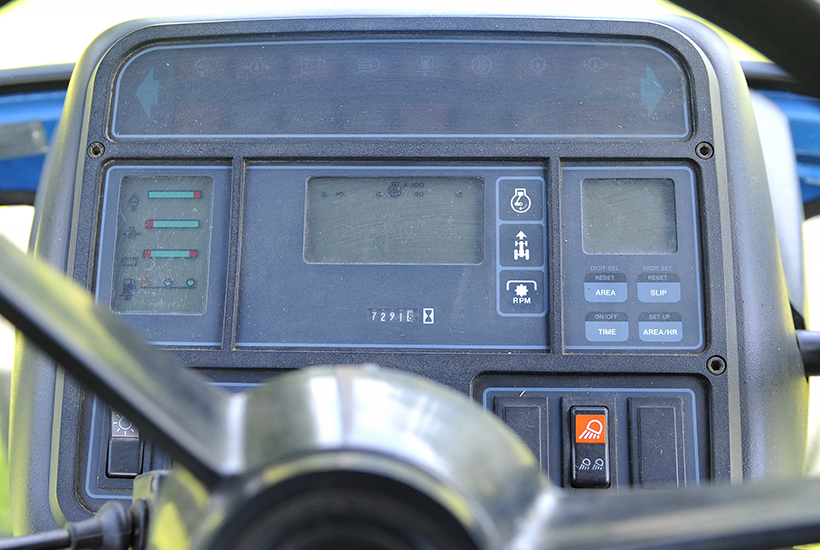
The digital dash represents the only ‘advanced’ electronics on the 7810. Tim says it can be a little temperamental at times, but is basically reliable.
Tried and trusted
“As far as the transmission is concerned, the Ford gearbox used in the 7810 (essentially the same as that found in the Ford 5000), is more or less bulletproof. As long as you check that the tractor runs in each gear and that the clutch operates properly, there should be little to worry about. However, the Dual-Power system can throw up problems now and then. Ideally this is most usefully checked with the tractor under load but, typically, that’s not possible during a pre-sale inspection.
“A lot of drivers back in the day would have been fairly unsympathetic when engaging Dual-Power, simply crashing it in to build speed as quickly as possible. I always make a point of dropping the engine revs momentarily as I engage the system, just to give everything an easier time and to avoid a stress-inducing, mechanical snatch.
“Overall, though, I don’t consider that the 7810 has any characteristic mechanical failings that buyers should be scared of. The big engine sits well within its mechanical comfort zone so, all else being equal, leads a relatively easy life.
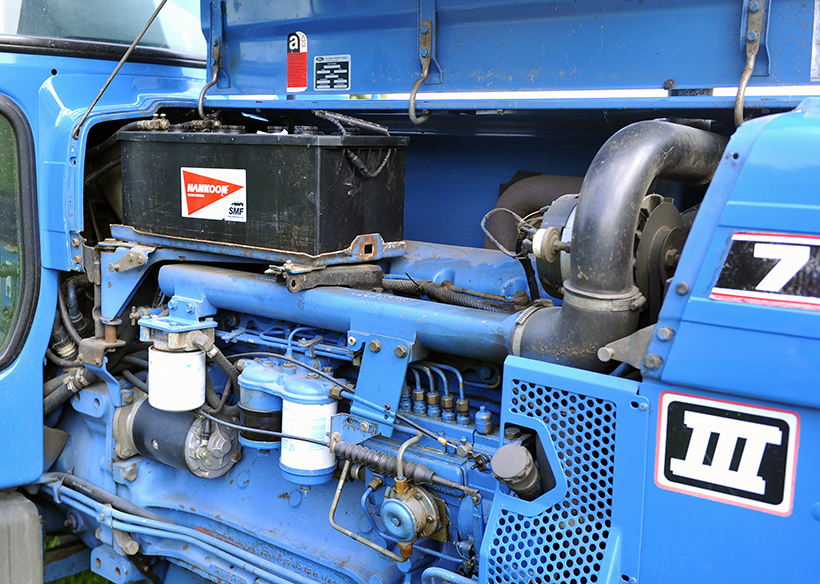
The normally-aspirated, 6.6-litre, six-cylinder engine that powers the 7810 is a peach. The bonnet hinges to provide access to the battery and top of the engine.
“I think that the reason this model is so popular now with buyers – and is appreciating so noticeably – is because it’s fundamentally such a good tractor. It ticks all the boxes in terms of being perfectly capable of working if needs be and providing a great environment for the driver. It’s also inherently reliable and, if problems do arise, is simple and straightforward to repair. Granted the cab doesn’t feature suspension, but those systems can throw you about more than a conventional set-up. I think there’s a lot to be said for not being too insulated from what the tractor’s actually doing and, with the 7810, you certainly remain in touch with what’s happening, without it ever being uncomfortable.”
Model success
Of course, in some respects, the 7810 is starting to become a victim of its own success. The relentless rise in values is inevitably starting to push the model beyond the reach of some enthusiasts, which is a shame, but this trend has got Tim thinking about which Ford tractor range might take off next?
“I wouldn’t be surprised if it’s the Ford 40 Series that begins catching the imagination of buyers looking for a workable classic,” he told me. “Having said that, I had an 8340 for a time but sold it because of niggling problems. It often didn’t change gear properly and I lost confidence in its reliability. Those early tractors with ‘electronic everything’ weren’t that great although, admittedly, things have got better more recently as the technology has improved. Nevertheless, I do wonder about what sort of ownership experience these all-electronic machines will offer 10 or 15 years down the line. There’s nothing worse than a tractor suffering with niggling, intermittent, electrical-related problems. Typically, specialist attention is required to put them right, and they’re beyond the scope of the enthusiast working at home with his spanners.
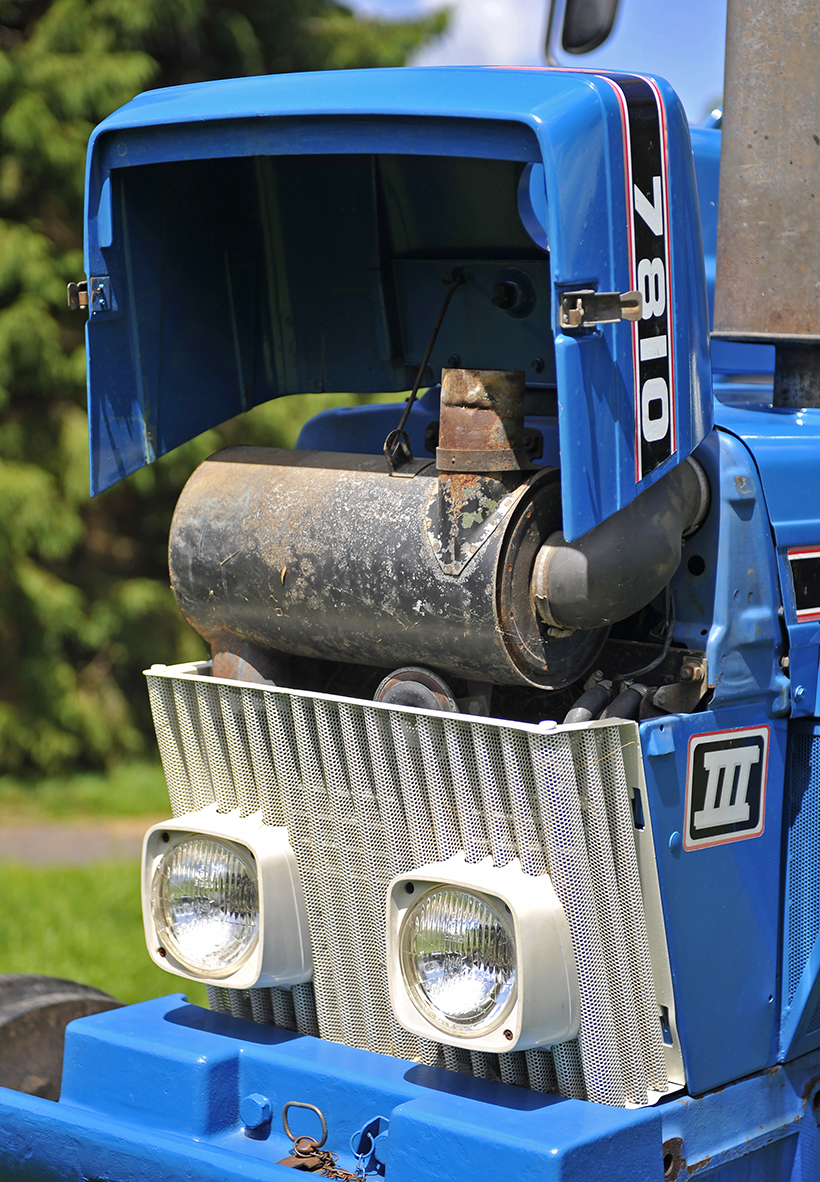
The nose cone hinges upwards to access the air cleaner and the mesh grille is easily removed for radiator cleaning/maintenance.
“I think these sort of concerns are what’s driving buyers towards the 7810, which they see as the last of the straightforward, ‘nut-and-bolt’ tractors that Ford made. It was essentially a mechanical tractor and today, for that reason, it remains repairable in the home workshop environment. As far as I’m concerned, I think it’s probably the best tractor that Ford ever made, thanks to its unbeatable combination of practicality, performance and reliability. It was built at a time when tractors were still over-engineered, which accounts for its strength and durability; it was one of the last to be made like that.”
Operational advantages
“Despite its power output and size, the 7810 remains an easy and light tractor to drive,” Tim continued. “It’s extremely manoeuvrable; a factor that’s undoubtedly helped by the low bonnet line that ensures the best possible view from the driver’s seat. The tractor’s power-to-weight ratio is excellent and it’s not a machine that causes ground compaction problems, making it excellent for both field and grass work.
“I remember my first drive in a 7810; it was at a launch event staged at a Forest of Arden ploughing match and I was instantly impressed. The ‘big engine in a smallish chassis’ approach appealed to me, and the two examples I now own have certainly lived up to all my expectations. Neither has given me a moment’s cause for concern, in mechanical terms, so I have no hesitation in recommending the model to others. I believe that the 7810 is a tractor that you can’t really go wrong with when buying. Essentially, there’s no problem that can’t be fixed, and most of what can go wrong is relatively cheap to put right. As I mentioned earlier, it’s probably the cab that can pose the most serious problems; dealing with a badly rusted example can be quite expensive and time-consuming if you want the job done properly.
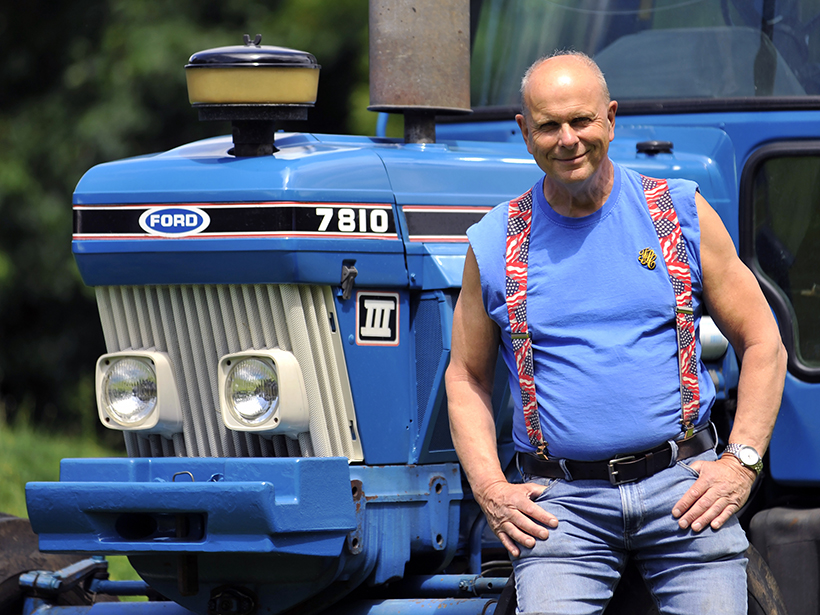
Tim Pearman has been collecting Super Q-cabbed Ford tractors for a number of years, and has nothing but praise for the 7810’s all-round ability.
“Undoubtedly the cost of a full restoration can be expensive, and even a series of relatively minor jobs can soon mount up to a largish bill. But, as always, the important thing is to go into ownership with your eyes open, and to have a clear idea about your expectations for the tractor. If your aim is to produce a concours-winning beauty, then you’ll need to have your cheque book handy. On the other hand, if you’re happy to stabilise any deterioration, then to live with a ‘working clothes’ look, the costs involved can be kept within a much tighter budget.
“Looking to the future, I think there’s still room for the standard 7810s to increase in value, based on what we’ve seen happen to the Silver Jubilee version. That model is dragging the blue ones up with it, so I see no reason why the £20,000 you have to pay for a decent, standard 7810 today, won’t push on to £30,000 in a few year’s time. The Silver Jubilee has blazed the trail.”
This feature comes from the latest issue of Ford & Fordson Tractors, and you can get a money-saving subscription to this magazine simply by clicking HERE



